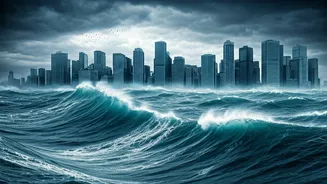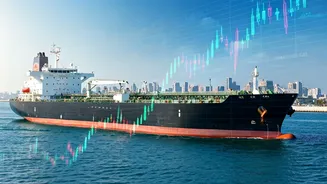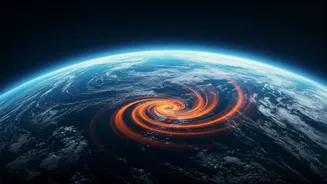Alarming Acceleration Observed
The findings of the study present a grim reality: the pace of sea-level rise is currently unmatched in the last 4,000 years. This rapid escalation surpasses
any previously documented rates within this timeframe. These conclusions stem from meticulous analysis of various datasets, including tide-gauge records, satellite observations, and proxy data from geological sources such as sediment cores. The convergence of evidence from multiple sources strengthens the confidence in these alarming projections. The data indicates that the accelerated rate of sea-level rise is a recent phenomenon, with the most significant increases observed in the past few decades. This alarming acceleration is primarily attributed to human-induced climate change, particularly the warming of the oceans and the melting of glaciers and ice sheets. The study provides important insights into the magnitude and pace of these changes, emphasizing the critical need to address climate change urgently.
Drivers of Sea Level
Multiple factors contribute to the ongoing rise in sea levels. A primary driver is thermal expansion, wherein seawater expands as it absorbs heat due to rising global temperatures. The oceans have absorbed over 90% of the excess heat generated by human activities, resulting in significant volumetric expansion. Secondly, the melting of glaciers and ice sheets is also a key contributor. Glaciers and ice sheets contain vast amounts of frozen water, and their melting directly adds freshwater to the oceans, leading to an increase in sea levels. The Greenland and Antarctic ice sheets are of particular concern, as their melting rates have accelerated in recent years. Furthermore, changes in land-based water storage, such as groundwater depletion and dam construction, can also have subtle effects on sea level. Overall, understanding the complex interplay of these factors is crucial for accurately predicting future sea-level rise and its regional impacts.
Impacts on Coastlines
The consequences of accelerating sea-level rise are far-reaching, especially for coastal regions. Rising sea levels lead to increased coastal flooding, erosion, and the saltwater intrusion into freshwater sources. Low-lying coastal areas and island nations are particularly vulnerable, with increased risks of displacement and economic loss. Furthermore, ecosystems, such as coral reefs, mangrove forests, and coastal wetlands, face severe threats. These ecosystems provide vital services like coastal protection, fisheries support, and carbon sequestration. The loss or degradation of these ecosystems can have cascading effects on biodiversity, human livelihoods, and the overall health of the planet. Changes in ocean salinity and temperature can also severely damage marine ecosystems. Addressing the impacts of sea-level rise will necessitate a combination of mitigation and adaptation strategies, including reducing greenhouse gas emissions and implementing coastal protection measures.
Future Projections & Risks
Scientists utilize climate models to project future sea-level rise, but the projections vary depending on the scenarios. The Intergovernmental Panel on Climate Change (IPCC) provides a range of projections based on various emission scenarios. The projections suggest that sea levels will continue to rise throughout the 21st century and beyond, even if greenhouse gas emissions are significantly reduced. The extent of the rise depends on future emissions, with higher emissions leading to more substantial increases. The risks associated with this projected rise are substantial, including more frequent and severe coastal flooding, inundation of coastal communities, and the displacement of millions of people. Moreover, rising sea levels can exacerbate other climate change impacts, such as extreme weather events and increased storm surges. Addressing these risks requires urgent and coordinated global action to mitigate climate change and adapt to the inevitable changes that lie ahead.
Mitigation and Adaptation
Addressing the challenge of rising sea levels requires a two-pronged approach: mitigation and adaptation. Mitigation focuses on reducing the root causes of sea-level rise, primarily by reducing greenhouse gas emissions. This involves transitioning to renewable energy sources, improving energy efficiency, and implementing sustainable land-use practices. Adaptation entails taking steps to minimize the impacts of sea-level rise and to make communities more resilient. This can include implementing coastal protection measures, such as sea walls and beach nourishment, and investing in early warning systems for coastal flooding. Furthermore, relocating vulnerable populations and developing climate-resilient infrastructure are essential adaptation strategies. The effectiveness of these measures depends on global collaboration, including investments in scientific research, technological innovation, and international cooperation. Successful responses will require a combination of policies, technology, and community involvement.












